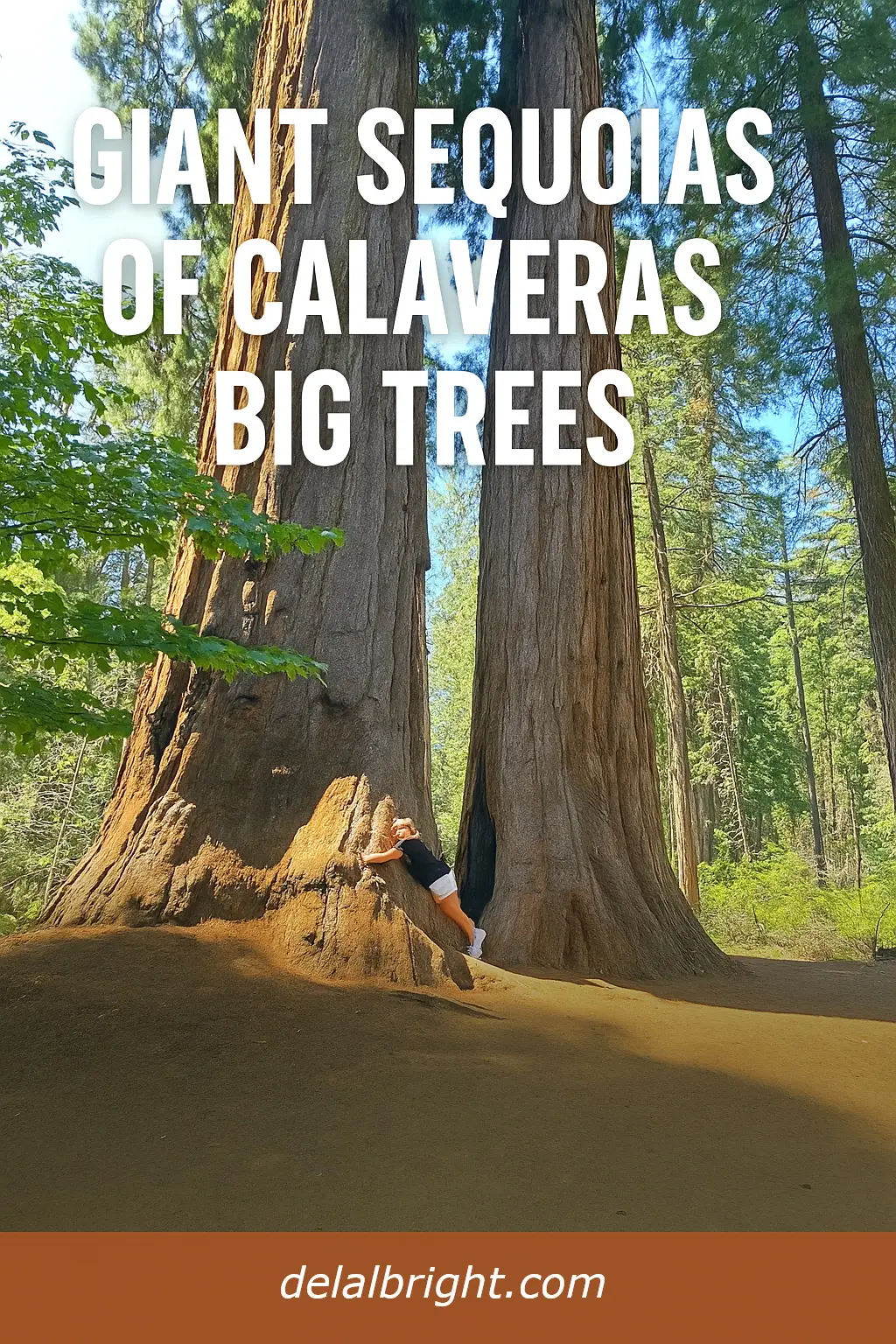Walking Among the Giants of Calaveras Big Trees State Park
Wandering among the towering giants of Calaveras Big Trees State Park is a humbling reminder of just how small we are in the grand scheme of Nature. Here, some of the largest living things on Earth—the Giant Sequoias—rise between 250 and 300 feet tall, with diameters wide enough to swallow a two-lane road. These ancient monarchs are living witnesses to thousands of years, some estimated at over 2,000 years old.
Among the standouts are the Empire State Tree, a massive beauty measuring nearly 18 feet across at the base, and the colossal Louis Agassiz Tree, stretching over 25 feet in diameter—one of the largest trees in the park. There is a lot to see and explore in this State Park, but first, let’s talk about the different groves of “big trees.”
When folks hear “big trees” in California, it’s easy to lump them all together, but there are actually three distinct giants worth knowing. Calaveras Big Trees State Park is famous for its groves of Giant Sequoias (Sequoiadendron giganteum), the world’s most massive trees by volume—thick, towering trunks that can live more than 3,000 years. Down south in Sequoia and Kings Canyon National Parks, you’ll find more of these same giants, including the General Sherman Tree, the largest tree on Earth. In contrast, along the fog-draped coast ranges of northern California grow the Coast Redwoods (Sequoia sempervirens)—taller but slimmer cousins that hold the crown as the tallest trees on the planet, soaring over 350 feet. Both species are related but thrive in very different environments: the sequoias of the Sierra Nevada on sunny, drier slopes, and the redwoods of the coast in cool, moist conditions.
The Famous Discovery Tree
Perhaps the most famous attraction is the Discovery Tree stump, the park’s earliest tourist draw. Felled in 1853 before conservation laws existed, it took five men working 22 days with hand augers to bore through its enormous trunk—because no saw in the world could match its size at the time.
Once leveled, its broad surface was turned into a spectacle: the stump hosted dances, stage performances, and even a two-lane bowling alley in the late 1800s. Today, it remains a sobering symbol of both our awe and our exploitation of these giants—and a must-see stop on any visit.
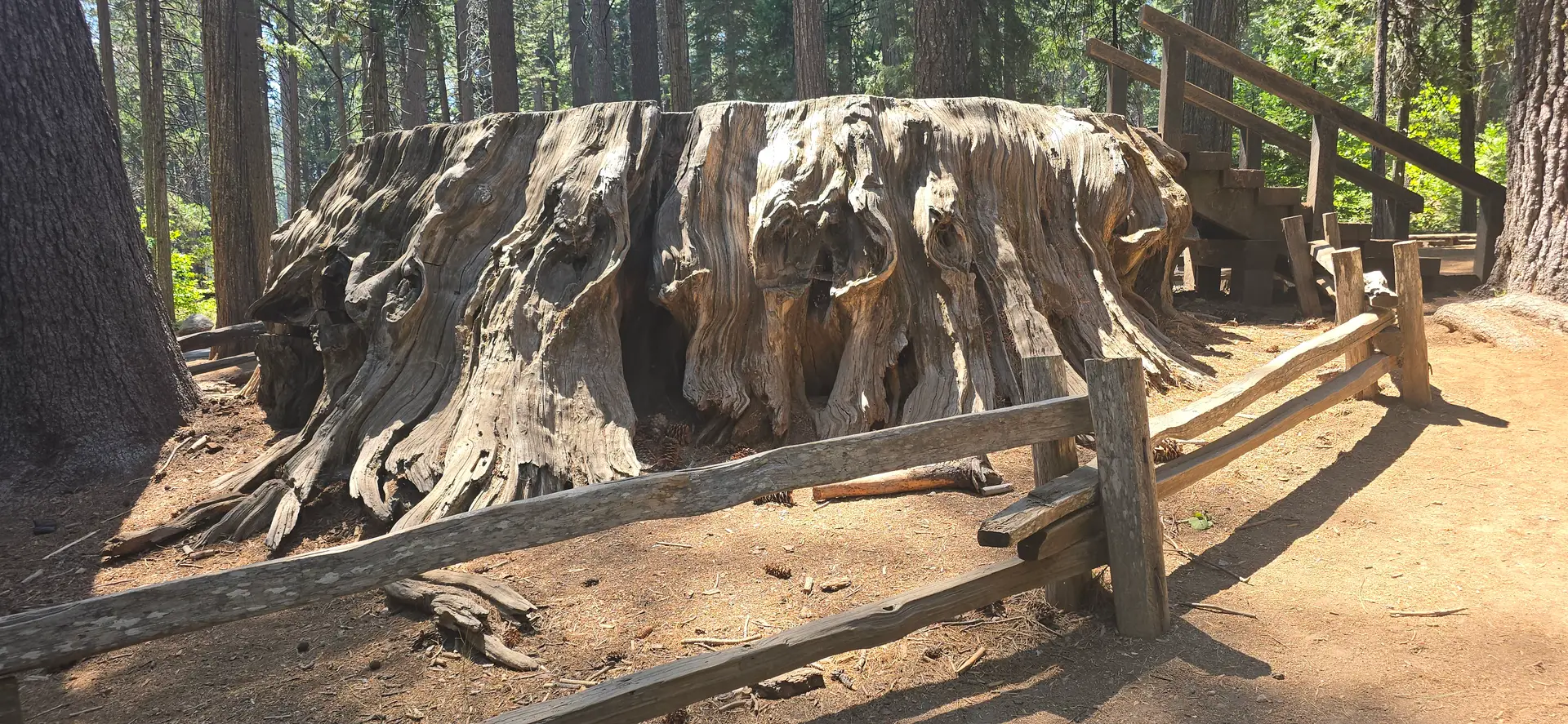
North Grove Trail Highlights
On our recent visit, Stacie and I strolled the North Grove Trail, an easy but enchanting loop where you can stand beside—and even walk through—some of the most famous trees in the park. Each step brought new amazement at the size, resilience, and quiet dignity of these ancient sequoias. This is not a stroll to be rushed. The magic of this forest of giants is meant to be savored and we did just that. Benches are strategically placed along the trail so one can just sit and marvel.
The Twins
Standing side by side, these trees share a single base before splitting into two magnificent trunks. They make a striking natural landmark and a favorite photo stop.
The Old Bachelor
This solitary giant stands slightly apart from the grove, weathered but strong, earning its name with a rugged, lonesome dignity.
The Father of the Forest
A fallen monarch stretching more than 300 feet in length, this tree now lies on the forest floor, offering visitors a chance to walk through sections of its massive hollow trunk. Few experiences bring home the scale of a sequoia like standing inside one. Decades ago Stacie and her son Ryan played in this fallen giant, playing peek a boo and hide and seek. It still rests in the same form for visitors to enjoy today.
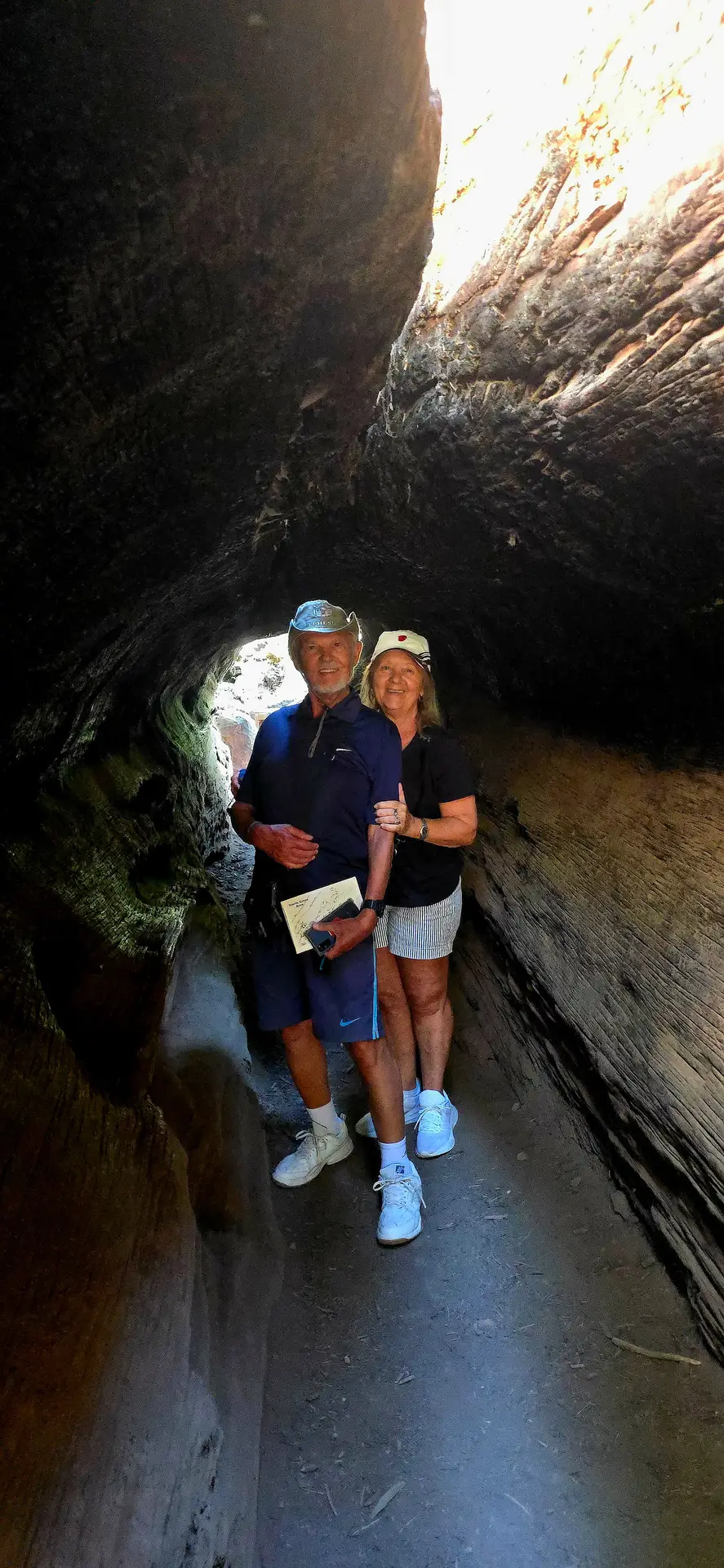
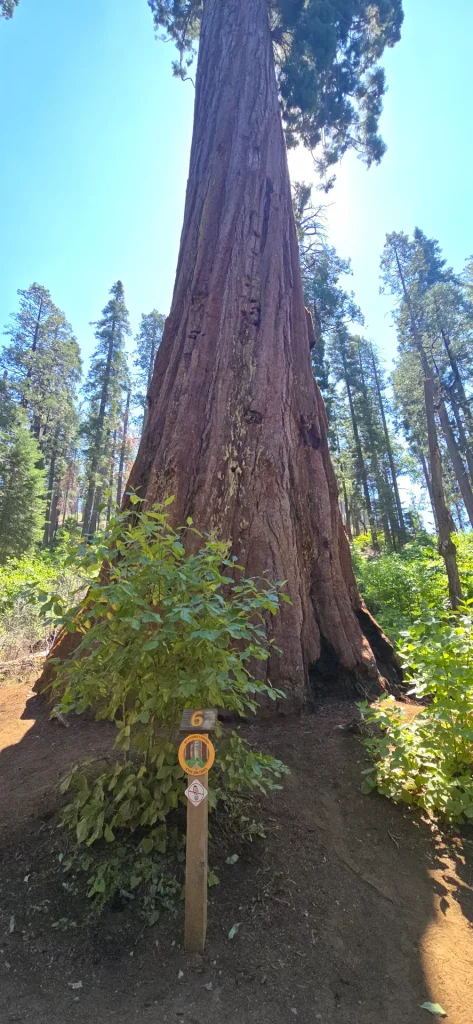
Spiral growth is a common characteristic of large tree trunk development. These trees are more flexible and better able to withstand wind stress and snow loading. The State Park trail guide handout points out that spiral growth can be found throughout the natural world in such forms as snail shells, sheep horns, and “even entire galaxies.”
The Pacific Yew Tree
Not a sequoia but a rare gem of the forest, the Pacific Yew thrives in the shade of its towering neighbors. With reddish bark and cultural significance—once valued for medicine and tool-making—it adds a unique layer of diversity to the grove.
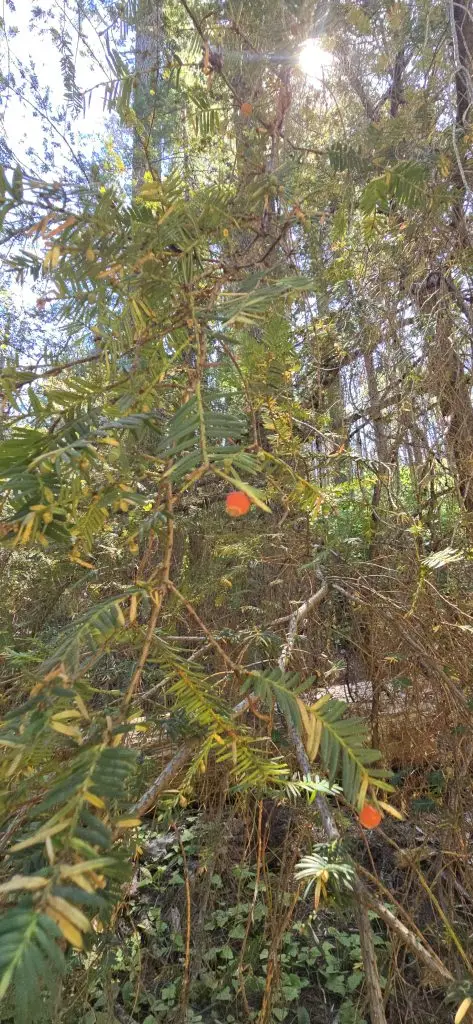
Why Visit Calaveras Big Trees State Park
From record-setting giants like the Empire State Tree to unique specimens such as The Twins, the Old Bachelor, and the Father of the Forest, Calaveras Big Trees offers a mix of awe, history, and natural beauty. Add in fascinating contrasts like the Pacific Yew, and you’ve got a destination where every trail bend holds a new marvel.
Whether you’re hiking, photographing, or simply breathing in the quiet majesty, this park is a living monument to time, resilience, and the importance of protecting wild places.
Tips for Visiting Calaveras Big Trees
Location: Just east of Arnold, CA along Highway 4 in the Sierra Nevada.
Best Time to Visit: Spring through fall offers easy access, wildflowers, and warm days. Winter brings snowshoeing opportunities but can mean icy roads.
Trails:
North Grove Trail – 1.5-mile loop, easy, family-friendly.
South Grove Trail – 5-mile loop, moderate, less crowded, with some of the park’s largest sequoias.
Accessibility: The North Grove Trail is well-maintained and mostly level, making it accessible for most visitors.
Parking: A large parking area is available near the visitor center. Weekends can fill up quickly in summer, so plan an early start.
Visitor Center: Features exhibits, maps, a small bookstore, and restrooms. A great first stop to orient yourself.
Picnicking: Tables are available near the North Grove and along Beaver Creek.
What to Bring: Comfortable walking shoes, water, and a camera. In summer, bring sunscreen and insect repellent; in winter, dress in layers and carry traction gear if snow is present.
Leave No Trace: Stay on marked trails to protect tree roots, and pack out all trash.
READ more about Giant Sequoia Trees in Sequoia National Park here.
Sequoias vs. Redwoods at a Glance
Giant Sequoia (Sequoiadendron giganteum)
Found in: Sierra Nevada (Calaveras, Sequoia & Kings Canyon National Parks)
Claim to Fame: World’s most massive tree by volume
Height: Up to ~300 feet
Trunk Diameter: Up to 30 feet
Lifespan: 2,000–3,000+ years
Coast Redwood (Sequoia sempervirens)
Found in: California coast ranges, from Big Sur to Oregon
Claim to Fame: Tallest trees on Earth
Height: Over 350 feet (some over 380 feet)
Trunk Diameter: Up to 20 feet
Lifespan: 1,500–2,000 years

